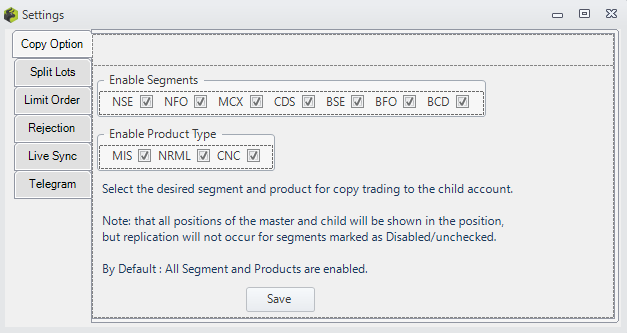Algorithmic trading has revolutionized the financial markets, enabling faster and more efficient decision-making through the use of computer algorithms. In this article, we will delve into various types of algorithmic trading strategies, such as Trend Following, Statistical Arbitrage, Mean Reversion, High-Frequency Trading, Sentiment Analysis, and Pairs Trading. Understanding these strategies will empower investors to make informed decisions and potentially enhance their trading success.
Let’s Have A Closer Look at Different Types of Algorithmic Trading Strategies :
Trend Following:
Trend following is a powerful algorithmic trading strategy that focuses on identifying and following trends in the market. By analyzing historical and real-time data, trend-following algorithms aim to buy assets that exhibit an upward trend and sell those on a downward trajectory. For instance, a trend-following algorithm might identify a stock that has consistently increased in price over a specific period and purchase it, expecting further gains. On the other hand, if a stock is consistently declining, the algorithm may initiate a sell order to capitalize on the downward trend.
Statistical Arbitrage:
Statistical arbitrage is an algorithmic trading strategy utilized by hedge funds and institutional investors. This strategy involves analyzing statistical relationships between related assets to identify price discrepancies. Algorithms pinpoint undervalued assets to buy and simultaneously sell overvalued assets, aiming to profit from the eventual convergence of prices. For instance, suppose two stocks historically move in sync, but one experiences a temporary deviation from the other. In that case, a statistical arbitrage algorithm would buy the undervalued stock and sell the overvalued one, expecting them to return to its usual correlation.
Mean Reversion:
Mean reversion is a popular algorithmic trading strategy based on the concept that prices tend to revert to their mean over time. Algorithms identify assets trading above or below their historical averages and execute trades accordingly. For instance, if a stock is trading significantly below its historical average, a mean reversion algorithm would buy the stock in anticipation of a price correction. Conversely, if a stock is trading significantly above its historical average, the algorithm may initiate a sell order, expecting the price to revert to its mean.
High-Frequency Trading (HFT):
High-frequency trading is a lightning-fast algorithmic trading strategy employed by large financial institutions and hedge funds. HFT algorithms use complex mathematical models and powerful computers to execute trades in fractions of a second. By analyzing real-time market data, these algorithms identify short-term trading opportunities and aim to profit from small price discrepancies. For example, an HFT algorithm may take advantage of momentary price imbalances between different exchanges, buying from one and selling to another to profit from the price differential.
Sentiment Analysis:
Sentiment analysis is an algorithmic trading strategy that incorporates the analysis of social media and other online sources to gauge public sentiment toward an asset or market. Algorithms collect and interpret data to determine the overall positive or negative sentiment surrounding a particular stock, cryptocurrency, or other financial instrument. If sentiment is overwhelmingly positive, a sentiment analysis algorithm may buy the asset, expecting its value to rise. Conversely, if sentiment turns negative, the algorithm may initiate a sell order to avoid potential losses.
Pairs Trading:
Pairs trading is an algorithmic trading strategy that involves identifying two correlated assets and executing trades based on the deviation between them. Algorithms identify assets that historically move together and create a statistical model to determine when they deviate from their usual relationship. For instance, if two stocks typically move in sync but one experiences a significant price drop while the other remains relatively stable, a pairs trading algorithm may buy the underperforming stock and sell the outperforming stock, expecting the price relationship to revert to its mean.
Conclusion:
Algorithmic trading offers investors the ability to make faster and more informed decisions in the financial markets. By understanding and utilizing different algorithmic trading strategies, such as trend following, statistical arbitrage, mean reversion, high-frequency trading, sentiment analysis, and pairs trading, investors can potentially enhance their trading performance. However, it is important to select a strategy that aligns with your investment goals and risk tolerance. Exploring these strategies will equip you with valuable knowledge and empower you to make more profitable trades.
Disclaimer: All data and information provided in this article are for informational purposes only. Myalgomate® makes no representations as to the accuracy, completeness, correctness, suitability, or validity of any information in this article and will not be liable for any errors, omissions, or delays in this information or any losses, injuries, or damages arising from its display or use. All information is provided on an as-is basis.






4 Comments
Neha
January 23, 2025Wonderful article
Aditya
November 5, 2024great blog on Algorithmic Trading Strategies
Anushree
July 30, 2024amazing very useful
Anika
July 3, 2024Very useful information thanks for the sharing.